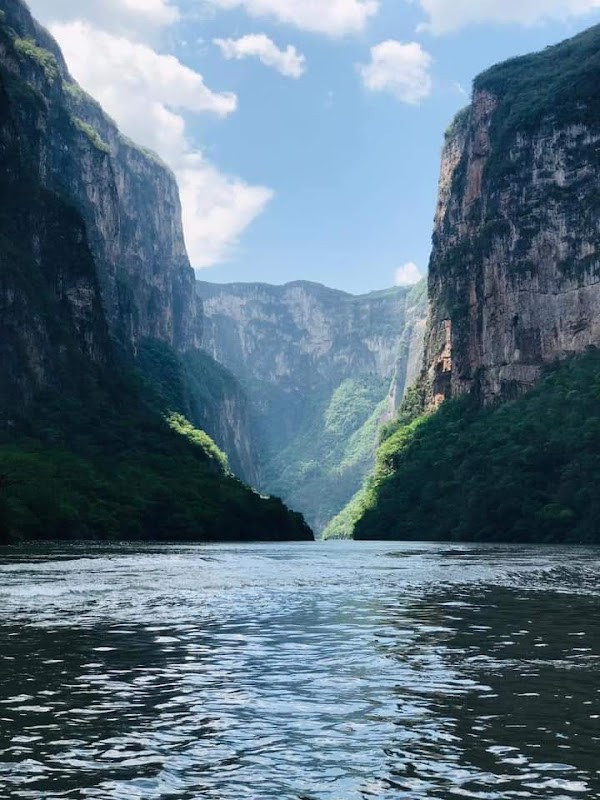
Rhythms of Chiapas: Experiencing the Marimba Festival in Tuxtla Gutiérrez
The Marimba Festival in Tuxtla Gutiérrez pulses with vibrant music and cultural energy, transforming the city into a lively celebration of Chiapas heritage. Discover practical advice and sensory highlights to help you experience this unique adventure with ease and excitement.
Stay Hydrated in the Heat
Chiapas’ warm, humid climate can quickly dehydrate visitors; carry a refillable water bottle and drink regularly, especially when dancing or walking between festival venues.
Wear Comfortable Footwear
Expect uneven pavement and cobblestone streets. Shoes with good support and grip will prevent fatigue and provide stability during long festival days.
Plan Evenings for Performances
Most marimba concerts take place in the early evening when temperatures drop, and acoustics improve—arrive early to claim good viewing spots.
Balance Festival Time with Nature
Take a half-day hike or boat tour to Cañón del Sumidero, just outside Tuxtla, for a refreshing outdoor contrast and a chance to engage with Chiapas’ rugged landscape.
Rhythms of Chiapas: Experiencing the Marimba Festival in Tuxtla Gutiérrez
The Marimba Festival in Tuxtla Gutiérrez, Chiapas, offers an immersive cultural adventure that invites visitors into the heart of southern Mexico’s vibrant traditions. This annual event celebrates the marimba—an instrument that commands the air with its bright, resonant tones, daring crowds to move to its rhythm. Streets transform into stages where skilled musicians engage in passionate performances, creating an atmosphere charged with communal energy.
Tuxtla Gutiérrez itself, situated in the rugged landscapes of Chiapas, sets a practical backdrop for this lively festival. The city’s warm climate and urban parks become gathering spaces where the marimba’s sound pulses against a backdrop of local foods, artisan crafts, and street vendors. The event typically spans several days, folding in workshops, dance performances, and food fairs. Whether you come for the music or the culture, the Marimba Festival balances excitement with accessibility.
Preparing for the festival is straightforward but essential. Comfortable walking shoes are a must; the event spreads across plazas and thoroughfares with uneven terrain. Hydration is critical—Chiapas can get humid, and moving amid dancing crowds will demand steady water intake. Timing your visit in the early evenings offers cooler temperatures and the best acoustics as the marimba’s notes ripple through the cooling air.
Beyond the sonic thrill, the Marimba Festival encourages exploration of Tuxtla’s local scenes. The nearby Cañón del Sumidero offers hikers and adventurers a dramatic encounter with Chiapas’ natural force—a deep gorge carved by the Grijalva River that dares you to stand in awe of its towering cliffs and rushing water. For festival-goers, a day spent hiking or taking boat tours provides a practical contrast to the urban festival’s vibrant pace.
This festival is an engagement with culture and nature that demands respect. The marimba performances are not just entertainment but a living tradition to understand and appreciate. The crowds pulse with anticipation, and the marimba’s four-octave voice commands attention and reverence alike. Approaching the festival with openness prepares you to interact with Chiapas at its most fiercely expressive.
In essence, the Marimba Festival is an adventure of sound and spirit. It offers both casual visitors and seasoned cultural explorers a taste of a region fiercely proud of its identity. With practical preparation and a sense of curiosity, attending this festival becomes more than a visit—it becomes a rhythm to live by.
Nearby Trips
All Adventures
Boat Charters
Water Activities
Adventures near Tuxtla Gutiérrez, Chiapas
Discover the unique and memorable adventures that make Tuxtla Gutiérrez, Chiapas special.
Frequently Asked Questions
When is the Marimba Festival held in Tuxtla Gutiérrez?
The Marimba Festival typically occurs in July, spanning several days filled with concerts, workshops, and local celebrations centered on this iconic instrument.
Are there any fees or tickets for the festival performances?
Many of the festival’s events are free and held in public plazas. Some workshops or special concerts might require a small fee or advance reservation.
Is it safe to attend the festival for solo travelers?
Tuxtla Gutiérrez is generally safe for tourists during the festival, but as with any large event, it’s wise to stay aware of surroundings, keep belongings secure, and remain in well-populated areas.
Where is the best place to hear authentic marimba music in Tuxtla outside of the festival?
Local cafes and parks, such as Parque de la Marimba, frequently host live marimba performances year-round, offering a quieter but quality experience.
Can I combine a visit to the festival with hiking or nature trips?
Absolutely. Cañón del Sumidero National Park is nearby and provides striking nature hikes and boat tours that complement the urban cultural experience.
What local foods should I try during the festival?
Sample Chiapas staples like tamales, pozol (a fermented corn drink), and local sweets at market stalls—fresh, authentic flavors that add another layer to the festival experience.
Recommended Gear
Supportive Walking Shoes
Comfortable and sturdy shoes will protect feet from uneven urban terrain and provide stability during long festival hours.
Reusable Water Bottle
Vital for maintaining hydration in the warm, humid environment of Chiapas.
Light Layers
Cooler evenings require a light jacket or sweater, especially during outdoor concerts.
Portable Phone Charger
Festival days can be long; keep devices charged for photos, navigation, and emergency contact.
Local Insights
Hidden Gems
- "Parque de la Marimba – a quieter spot for impromptu performances"
- "Local artisan markets showcasing Chiapas crafts"
Wildlife
- "Motmots and quetzals occasionally seen in city parks"
- "Butterflies fluttering during warmer months"
History
"The marimba is a central element of Chiapas’ cultural identity, with roots tracing back to African, indigenous, and European influences blending over centuries."
